 1993 Mitsubishi Sigma Station Wagon (F07W) Dimensions, Size & Specs
1993 Mitsubishi Sigma Station Wagon (F07W) Dimensions, Size & SpecsMeasurements of the 1993 Mitsubishi Sigma Station Wagon, engineered for optimal performance and comfort
| Dimensions | |
|---|---|
| Length: | 4800 mm189.0 in15.7 ft |
| Width: | 1775 mm69.9 in5.8 ft |
| Height: | 1505 mm59.3 in4.9 ft |
| Trunk Capacity: | 428 liter15.1 cu ft |
| Trunk Capacity (Max): | 737 liter26.0 cu ft |
| Weight Specifications | |
| Curb Weight: | 1575 kg3472 lbs |
| Maximal permitted Weight: | 2130 kg4696 lbs |
| Tire Specifications | |
| Rims Size: |
|
| Tire Size: |
|
The Mitsubishi Sigma Station Wagon (F07W), produced between 1993 and 1996, is a practical mid-size station wagon designed to meet the needs of families and drivers seeking both style and functionality. Measuring 4800 mm (189 inches) in length, 1775 mm (69.9 inches) in width, and 1505 mm (59.3 inches) in height, this vehicle offers a spacious interior and a stable road presence while maintaining manageable exterior dimensions for urban use. Weighing in at a curb weight of 1575 kg (3472 lbs) and a maximum permissible weight of 2130 kg (4695 lbs), the Sigma Station Wagon balances robustness with efficiency. The model rides on 15-inch rims, paired with 205/65 R15 tires, providing a comfortable and controlled driving experience on various road surfaces. Cargo capacity is a standout feature, with a standard luggage volume of 428 liters (15.1 cubic feet), which can be expanded to 737 liters (26 cubic feet) when the rear seats are folded down, making it suitable for transporting bulky items or for extended trips. This Mitsubishi Sigma generation blends functionality and versatility, making it an ideal choice for those looking for a dependable wagon with ample space and solid build quality.
Discover the standout features that make the 1993 Mitsubishi Sigma Station Wagon a leader in its class
Have a question? Please check our knowledgebase first.
The Mitsubishi Sigma Station Wagon (F07W), produced between 1993 and 1996, has a length of 4800 mm (approximately 189 inches), a width of 1775 mm (around 69.9 inches), and a height of 1505 mm (about 59.3 inches). These dimensions place it solidly within the mid-to-large station wagon category for its time, offering substantial interior space and a commanding road presence typical of early 90s family wagons.
The Mitsubishi Sigma Station Wagon (F07W) measures 4800 mm (189 inches) in length and 1775 mm (69.9 inches) in width. Standard single-car garage dimensions generally range between 2438 mm to 3048 mm (8 to 10 feet) in width and about 4877 to 6096 mm (16 to 20 feet) in length. Given these typical measurements, the Sigma Station Wagon should fit comfortably inside most standard garages in terms of width and length, although maneuvering space might be tight if the garage is on the smaller end of the spectrum. Consider clearance for opening doors and additional storage when parking indoors.
Compared to its predecessor models, the 1993-1996 Mitsubishi Sigma Station Wagon (F07W) shows notable updates in size. While specifics vary by market, this generation extended the length to 4800 mm (189 inches), enhancing interior space and cargo capacity. The width of 1775 mm (69.9 inches) and height of 1505 mm (59.3 inches) provided a broader and slightly taller profile than earlier versions, aimed at improving passenger comfort and cargo versatility. These dimensional improvements reflect Mitsubishi's strategy to offer a more family-friendly and spacious station wagon during this era.
The Mitsubishi Sigma Station Wagon (F07W) has a curb weight of approximately 1575 kg (3472 lbs) and a maximum weight of 2130 kg (4697 lbs). This weight class indicates a substantial build typical of 1990s station wagons, balancing robust safety and durability with reasonable fuel efficiency. The higher weight affects acceleration and braking, requiring a sturdy suspension setup to maintain comfort and handling. Overall, drivers can expect a stable ride with moderate agility, well-suited for family use and capability to carry passengers and cargo without overly compromising performance.
The Mitsubishi Sigma Station Wagon offers a luggage capacity of 428 liters (roughly 15.1 cubic feet) behind the rear seats, which is typical for mid-sized wagons of its generation. When the rear seats are folded down, this capacity expands significantly to 737 liters (around 26 cubic feet), providing versatile cargo space for larger items. This flexibility makes the F07W generation practical for families and individuals who require additional storage for trips, sporting equipment, or moving larger objects while maintaining passenger seating when necessary.
The Mitsubishi Sigma Station Wagon (F07W) comes equipped with 15-inch rims, paired with tires sized 205/65 R15. These tire dimensions provide a balanced combination of ride comfort, road grip, and durability — characteristics well suited to the station wagon's focus on family and utility. The 205 mm width offers solid traction, and the 65% sidewall height (relative to the width) enhances cushioning against road imperfections, contributing to overall driving stability and comfort.
In the early 1990s, the Mitsubishi Sigma Station Wagon (F07W) positioned itself competitively among mid-sized station wagons such as the Toyota Camry Wagon and Nissan Avenir. With a length of 4800 mm (189 inches), it was slightly longer than many rivals, allowing for increased interior space and larger cargo capacity of 428 liters normally, expanding to 737 liters with folded seats — comparable or better than most competitors. Its curb weight of 1575 kg (3472 lbs) was within the average range, indicating a balance of sturdy construction and practical usability. The F07W’s tire and rim setup also pitched it comfortably between economy and comfort-focused choices in the segment, making it a practical family wagon with good dimension-driven versatility.
While exact interior passenger dimensions for the Mitsubishi Sigma Station Wagon (F07W) are not extensively documented, its overall exterior dimensions and station wagon design provide spacious and comfortable seating for up to five passengers. The length of 4800 mm (189 inches) and width of 1775 mm (69.9 inches) contribute to generous legroom and shoulder space in the front and rear seats. The wagon body style also ensures ample headroom with a height of 1505 mm (59.3 inches). The flexible rear seating arrangement, which folds down to expand luggage space, further enhances practical use for families and active users requiring varied cargo and passenger configurations.
The 1993-1996 Mitsubishi Sigma Station Wagon (F07W) introduced several refinements over earlier station wagon models from Mitsubishi. These included a more aerodynamic and modern exterior design to reduce drag and improve fuel efficiency. The increased length and width provided improved passenger and cargo space, which enhanced overall practicality. Improvements in suspension and ride comfort were also a focus, leading to a smoother driving experience. Additionally, safety features typical of the era, such as reinforced body structures and better braking systems, were incrementally updated. The vehicle's versatility remained a highlight, with a spacious luggage area and foldable rear seats for flexible usage.
Equipped with 15-inch rims and 205/65 R15 tires, the Mitsubishi Sigma Station Wagon (F07W) offers a balanced performance profile in terms of handling and ride comfort. The tire width of 205 mm provides a good contact patch with the road, improving traction and stability, especially during cornering and wet conditions. The 65 aspect ratio results in a moderately tall sidewall which cushions the ride, absorbing bumps and uneven road surfaces effectively. This balance supports the station wagon’s role as a family-oriented vehicle, combining reliable handling with a comfortable ride, without compromising tire durability or fuel economy.
Discover similar sized cars.
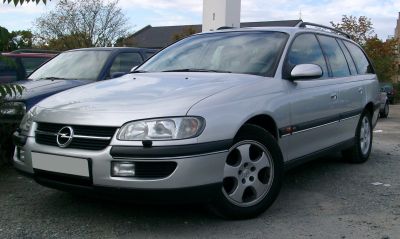
| Production: | 1994-1999 |
|---|---|
| Model Year: | 1994 |
| Length: | 4820 mm189.8 in |
| Width: | 1785 mm70.3 in |
| Height: | 1500 mm59.1 in |
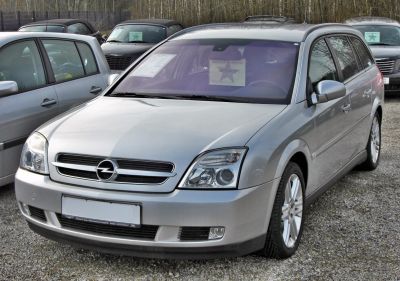
| Production: | 2002-2005 |
|---|---|
| Model Year: | 2003 |
| Length: | 4822 mm189.8 in |
| Width: | 1798 mm70.8 in |
| Height: | 1500 mm59.1 in |

| Production: | 2015-2018 |
|---|---|
| Model Year: | 2015 |
| Length: | 4820 mm189.8 in |
| Width: | 1810 mm71.3 in |
| Height: | 1480 mm58.3 in |
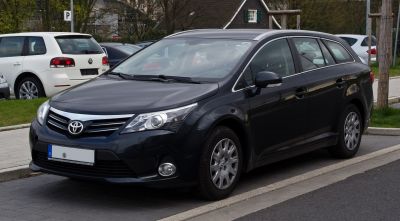
| Production: | 2012-2015 |
|---|---|
| Model Year: | 2012 |
| Length: | 4780 mm188.2 in |
| Width: | 1810 mm71.3 in |
| Height: | 1480 mm58.3 in |
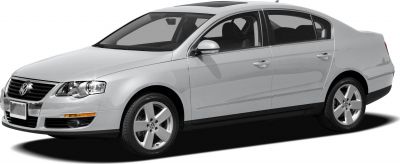
| Production: | 2005-2008 |
|---|---|
| Model Year: | 2005 |
| Length: | 4774-4820 mm188.0-189.8 in |
| Width: | 1991-2004 mm78.4-78.9 in |
| Height: | 1456-1517 mm57.3-59.7 in |
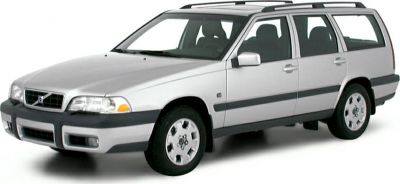
| Production: | 1996-2000 |
|---|---|
| Model Year: | 1997 |
| Length: | 4730 mm186.2 in |
| Width: | 1760 mm69.3 in |
| Height: | 1430 mm56.3 in |
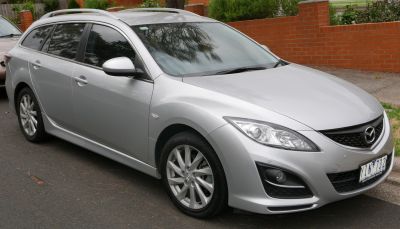
| Production: | 2010-2012 |
|---|---|
| Model Year: | 2011 |
| Length: | 4785 mm188.4 in |
| Width: | 1795 mm70.7 in |
| Height: | 1490 mm58.7 in |
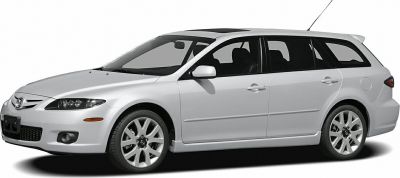
| Production: | 2007-2010 |
|---|---|
| Model Year: | 2008 |
| Length: | 4765-4785 mm187.6-188.4 in |
| Width: | 1795 mm70.7 in |
| Height: | 1490 mm58.7 in |
